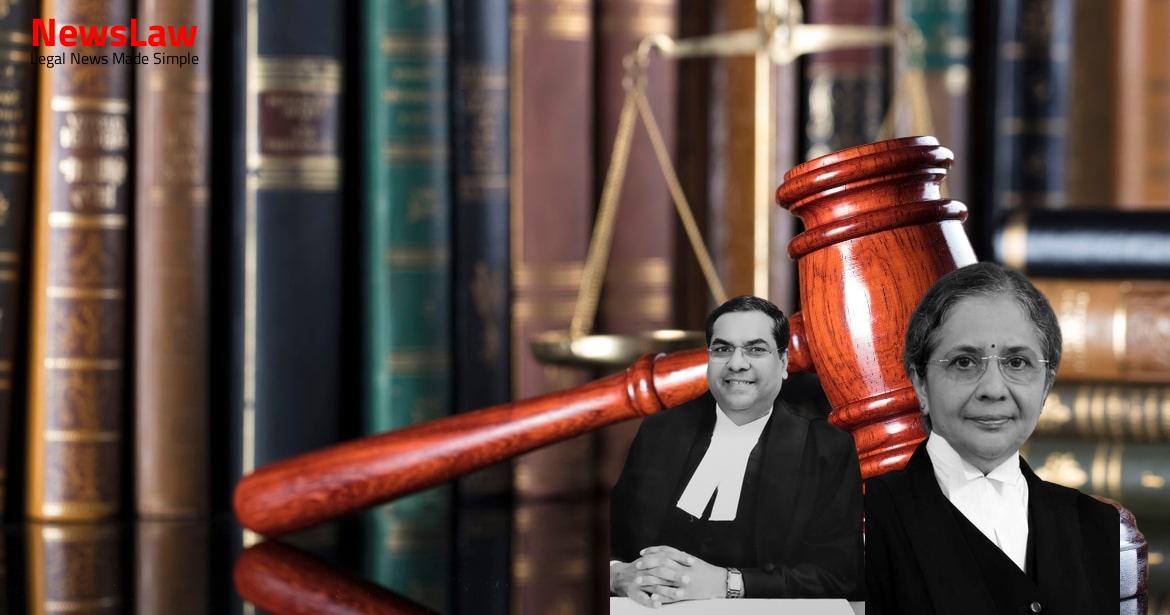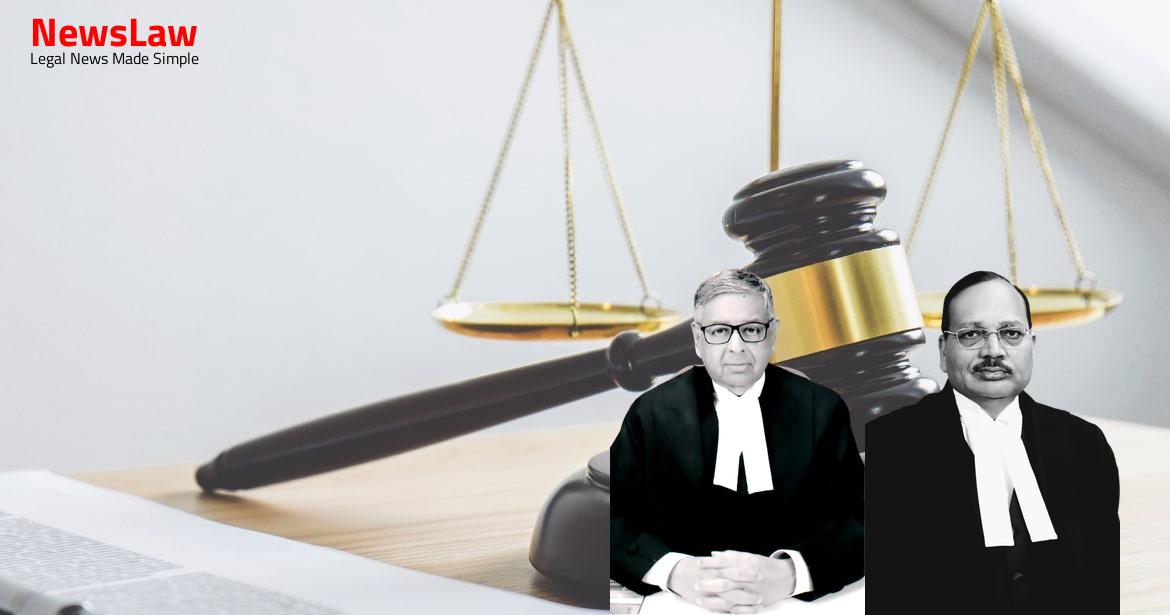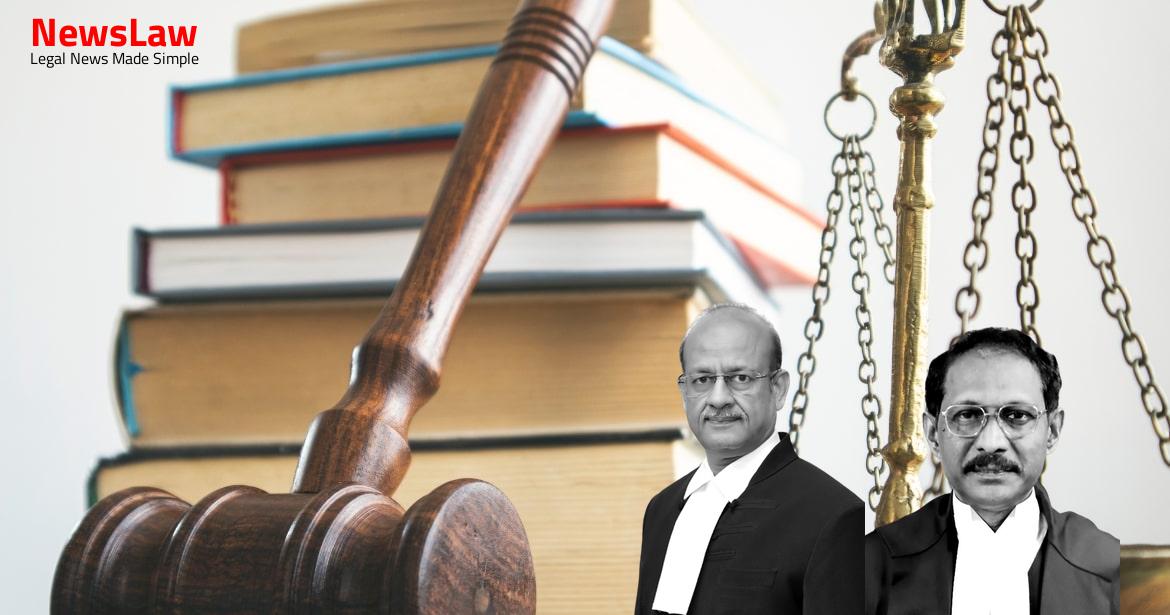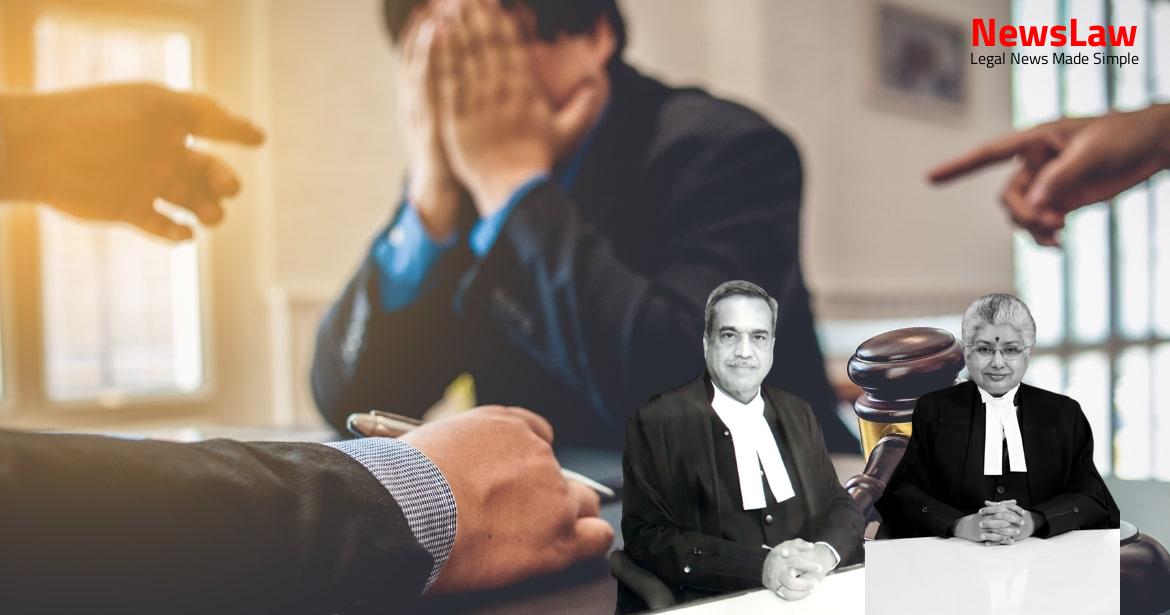Explore the profound legal analysis conducted by the court on specific endowments in religious institutions. The judgement delves into the intricacies of divesting property rights, creating charges, and enforcing rights associated with endowments. Stay tuned to unravel the complexities of religious endowments under legal scrutiny.
Facts
- The appellant had the right to possess and manage the donated suit jewelry during the Adipooram festival days.
- The Temple came under direct administration of the Hindu Religious and Charitable Endowments under the Madras Hindu Religious Endowments Act, 1926.
- The suit jewelry was donated to the Temple for the use of the deity and did not belong to any private individual.
- The appellant’s family had no claim over the suit jewelry and it was solely used for adorning the idol during festivals.
- The appellant had filed a civil suit seeking possession and control over the Kudavarai (safe vault) of the Temple where the suit jewelry was kept.
- The High Court allowed the Temple’s appeal and dismissed the appellant’s suit for a mandatory injunction to maintain possession over the Kudavarai.
- There was an undertaking in 1962 where the appellant’s adoptive father gave the keys of the Kudavarai for storing Temple jewelry temporarily.
- The management of the Temple, under the 1959 Act, had control over the custody and management of the Temple jewels and valuables.
- The suit jewelry was only used for adorning the deity during festivals and was not meant for personal ownership or use.
- Multiple witnesses testified that the suit jewelry was always used for the Temple deity and not by the family of Muthuthandapani Chettiar.
- The dispute revolved around the ownership and possession of the suit jewelry dedicated to the Temple deity Sri Neelayadhakshi Amman.
- The trial court observed that the relief sought by the appellant was barred by limitation under Article 113 of the Limitation Act, 1963.
- The respondent/Temple filed a separate suit in 1990 seeking a declaration of specific endowment in respect of suit jewellery in favor of the deity and a permanent injunction against the appellant.
- The trial court decreed the suit in 1996 based on evidence presented by the Temple including the Temple Account Book and witness testimonies.
- The Temple had keys to the Kudavarai along with Muthuthandapani Chettiar, indicating joint operation of the locks.
- First appellate court affirmed the ownership of the suit jewellery as an endowment vested in the Temple, recorded even in 1963.
- The appellant’s cross-appeal against the rejection of an injunction was also dismissed by the first appellate court.
- Appellant’s second appeal before the High Court was dismissed in 2008 for failure to prove adoption and reliance on post-death adoption deed.
- The first appellate court held that the suit was not barred by limitation as the suit jewellery was in custody of the Temple.
- The Temple’s omission to seek a declaration of ownership of the suit jewellery prevented them from filing a suit for it as a specific endowment.
- The appellant’s first appeal against the judgment was dismissed by the Subordinate Judge who reiterated the bar under the 1959 Act and inaction on the 1962 undertaking by Muthuthandapani Chettiar.
- The appellant succeeded in another appeal, where the court held the respondent’s suit for declaration was barred under Order II Rule 2 of the Code of Civil Procedure due to a previous civil suit in 1981.
Also Read: Analysis of Bail Conditions in Criminal Appeal No. INSC 48/2024
Analysis
- The judgement discusses the identification of 26 items of suit jewelry as ‘Ad ipooram Ambal Thiru Abaranam’ which supports the respondent’s case.
- Exhibit A-1 is a register containing details of jewels of the Temple and had shown the suit jewelry as ‘Adipooram Ambal Thiru Abaranam’ even in 1963.
- The creation of a charge on properties by settlors emphasized their divestment of the right to income and the property, providing security for their liability.
- Section 32 of the Act allows trustees to demand payment from those in possession of charged properties for expenses.
- The High Court referred to Section 29(d) of the 1959 Act regarding the preparation of registers for religious institutions, supporting the findings with legal provisions.
- It is established that specific endowments do not require transfer of title, as seen in the case of property dedicated for a family idol worship.
- Concurrent findings of fact confirm that the suit jewelry was gifted for adorning the deity during the Adipooram festival, constituting a specific endowment.
- Definitions under the 1926 and 1959 Acts clarify ‘religious endowment’ and ‘specific endowment’ along with the criteria for public or private character of endowments.
- Exhibit B-1 attests to the family’s dedication of properties to temples for endowment, aligning with the legal understanding of specific endowments.
- The judgment emphasizes the enforceability of rights associated with specific endowments, such as the suit jewelry intended for deity decoration.
- Endowment can be created in favor of an idol or temple without specific ceremonies if the intention is clearly expressed.
- For a charity to be a ‘religious charity’ under the 1959 Act, it must be public and associated with a Hindu festival or religious observance.
- In terms of the Madras Hindu Religious and Charitable Endowments Act, 1951, the settlor must divest himself of the property endowed for it to be considered an endowment.
- A charity can be implied by user permission for religious or public purposes over time, without specific connections to a temple.
- User permission for religious or public purposes can imply the extinguishment of private property rights over time.
- Religious ceremonies like Sankalpa and Samarpanam are relevant but not indispensable for proving dedication.
- Recent judgments have distinguished between ‘religious charity’ and private charitable trusts.
- In a partial dedication, a charge is created on the property or a trust is established for religious or charitable purposes.
- Absolute dedication involves giving the property outright to an idol or institution, divesting the donor of all beneficial interests.
- Control over a specific endowment attached to a math or temple located partly within and partly outside the State
- Clarification on management and supervision of such endowments
- Determination of responsibilities concerning the endowment
Also Read: Conviction Upheld for Murder and Concealment of Body
Case Title: R.M. SUNDARAM @ R.MEENAKSHISUNDARAM Vs. SRI KAYAROHANASAMY AND NEELAYABHAKSHI AMMAN TEMPLE (2022 INSC 665)
Case Number: C.A. No.-003964-003965 / 2009



